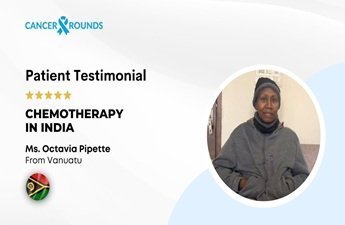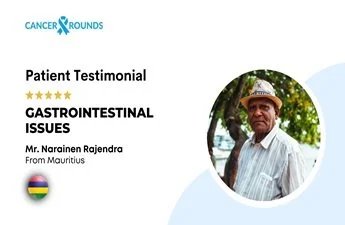Non-Hodgkins
Non-Hodgkins Overview
Cancer is mainly that stage during which cells grow and divide out of control. Cells of any part of the body can multiply uncontrollably to reach a cancerous stage. Even cancer cells of one body part can spread and reach out to different parts of the body in later stages of cancer.
Non-Hodgkin’s lymphoma or NHL is the cancer of white blood cells also known as lymphocytes which are an integral part of the immune system. This lymphoma or cancer of the white blood cells affects the entire immune system drastically. Following are few facts about NHL:
- Different types of lymphoma which have similar characteristics normally are referred to as NHL. But there is a specifically different lymphoma with relatively different characteristics and is known as Hodgkin lymphoma, its treatment is also different from NHL.
- NHL is mostly observed in adult patients but sometimes children also get affected by it.
- NHL initially begins from the lymph nodes and gradually might spread to skin and other parts over the time if left undiagnosed or untreated. Lymphoma of the skin is also very commonly found which is mostly caused by outspread of NHL.
What is the main origin of Non-Hodgkin’s lymphoma?
Non-Hodgkin’s lymphoma mainly originates within the lymphatic system of the body. This system is an integral part of the immune system which helps mainly in fighting against several types of diseases.
The Non-Hodgkin’s Lymphoma can begin from anywhere in the body mainly in the regions of lymph tissue. Following are few origin points for any Non-Hodgkin’s Lymphoma:
- Lymph nodes: These are those bean-sized structures which have a massive collection of lymphocytes as well as other immune system cells in the whole body. Non-Hodgkin’s Lymphoma can appear in any of the regions containing lymph nodes in the body even inside the chest, abdomen, and pelvis.
- Spleen: The spleen is located below the lower ribs on the left side of the body. organ under the lower ribs on the left side of the body. The spleen makes lymphocytes and other immune system cells. It also stores healthy blood cells and filters out damaged blood cells, bacteria, and cell waste.
- Thymus: The thymus is present just behind the upper breast bone as a small organ in front of the heart. Its main role is the production of the T lymphocytes. Non-Hodgkin’s Lymphoma presence in this region initially
- Adenoids and tonsils: These are those collective lymphatic tissue regions mainly at the back of the throat. Its main role is to produce antibodies against germs which reach inside the body. Non-Hodgkin’s Lymphoma in such regions also impairs the entire antibody production in the body.
- Bone marrow: Non-Hodgkin’s Lymphoma can also begin in the bone marrow region. It impairs initially the new blood cell formation in the body causing immediate low blood counts.
- Digestive tract: Non-Hodgkin’s Lymphoma can originate in the stomach, intestine, or in any gastrointestinal region possessing lymph tissue.
What are the types of Non-Hodgkin’s lymphoma?
- Non-Hodgkin’s lymphoma is of following types:
- Diffuse large B-cell Lymphoma
- Cutaneous T-cell lymphomas
- Cutaneous B-cell lymphomas
- Follicular lymphoma
- Mantle cell lymphoma
- SLL/CLL or Chronic lymphocytic leukemia
- Burkitt’s lymphoma
- AIDS-related lymphoma
- CNS lymphoma
- Waldenstrom macroglobulinemia
Some of the symptoms like persistent abdominal pain, swelling, chest pain, trouble breathing, fever, swollen lymph nodes in any area, can be an indication for any of the Non-Hodgkin’s type. It must always be treated with a proper treatment after confirmed diagnosis.
What are the treatment options of Non-Hodgkins Lymphoma?
- Chemotherapy: It is the first line of treatment in Non-Hodgkins Lymphoma. There are plenty of drugs available to treat Non-Hodgkins Lymphoma. The choice of the drug depends on the type and the stage at which the disease is diagnosed. In most of the cases oncologist use combination therapy. These drugs belong to different classes such as Purine analogues, alkalizing agents or Anthracyclines. There is a possibility of side effected with the use of chemotherapy. The doses are usually given in multiple cycles to be given over many weeks.
- Bone Marrow Transplant: The survival rate with bone marrow transplant done successfully for NHL is relatively higher than other modalities. In bone marrow transplant, stem cells are harvested and injected after a high dose of chemotherapy. Autologous stem cell transplant in which patients own stem cells are used to produce new disease-free cells is a common procedure with high success rates. 5 years of progression free survival rate is better in patients undergoing a bone marrow transplant procedure.
You May Be Also Interested In
All Type Of Cancer Pages
Related Patient Stories

So thankful to Cancer Rounds and Dr. Gaurav Dixit. Your care and support helped me heal and regain strength during my lymphoma treatment.

A heartfelt thanks to Cancer Rounds and Global Hospital, Chennai. After a month of unexplained abdominal pain, I finally got clarity and care I truly needed!
Our Impact
CancerRounds is making quality cancer care accessible to more people every day.




Why Choose India for Cancer Treatment?

World-Class Care
Skilled oncologists provide top-tier medical services

Affordable Treatment
Costs are significantly lower than in Western countries.

Comprehensive Packages
Hospitals offer all-inclusive plans covering surgery, stay, and aftercare.

Easy Accessibility
Well-connected airports and international flight routes.

Proven Success
High patient satisfaction and positive treatment outcomes
Thank You!
Your form has been submitted successfully.